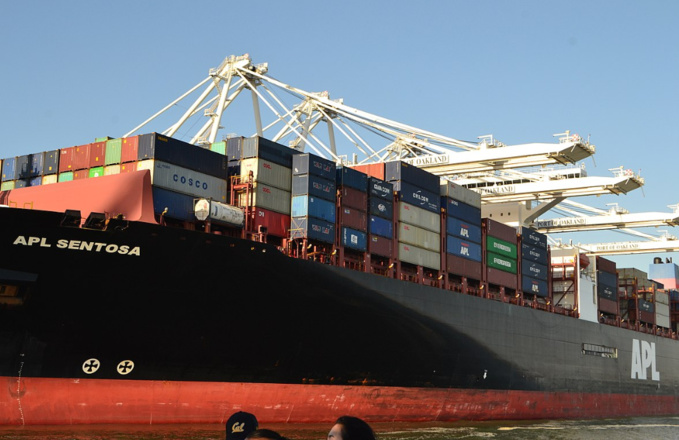In April, China's exports grew by 3.5% year-on-year (from minus 6.6% in March), while imports, on the contrary, declined an additional 14.2% (minus 0.9% in March), which contributed to including a sharp drop in energy prices, follows from the data of foreign trade statistics of the PRC.
In deliveries abroad, the largest increase was in medical goods (plus 11% year-on-year), while the export of most consumer goods continued to decline.
At the same time, imports were mainly reduced due to lower imports of components, while daily oil imports into the country increased in April by 0.74 million barrels per day compared to the previous month, to 10.42 million изв, against the background of an increase refining and demand from end consumers.
“Export growth in April may be a result of completing those orders that were made earlier and postponed due to restrictions. Given the quarantine in many countries, external demand is likely to be weaker,” Capital Economics believes, indicating that South Korean exports in April fell by a record 24% in 11 years. ING Bank is also waiting for export contraction and points to the risks of another exacerbation of the trade war with the United States.
Recall, the International Monetary Fund also predicts that in China this year the growth rate will be minimal, but nonetheless positive - 1.2% (in 2021, plus 9.2%). At the same time, according to Chinese state statistics, China's GDP in the first quarter of this year decreased by 6.8% year-on-year and by 9.8% by the fourth quarter of 2019 (then growth was 6%, last year as a whole - 6, 5%). This is the first decline since quarterly data on growth in the PRC began to be published in 1992.
In particular, industrial production for the whole quarter decreased by 8.4%, however, the indicator includes both a drop of 13.5% in January-February, and a much less significant decrease in March - by 1.1%. At the same time, some sectors suffered significantly more than others: in the automotive industry, output fell by 43%, while in pharmaceuticals, telecommunications and robotics, on the contrary, there was an increase. Total exports decreased by 3.5% for the quarter, imports - by 2.4%.
source: capitaleconomics.com
In deliveries abroad, the largest increase was in medical goods (plus 11% year-on-year), while the export of most consumer goods continued to decline.
At the same time, imports were mainly reduced due to lower imports of components, while daily oil imports into the country increased in April by 0.74 million barrels per day compared to the previous month, to 10.42 million изв, against the background of an increase refining and demand from end consumers.
“Export growth in April may be a result of completing those orders that were made earlier and postponed due to restrictions. Given the quarantine in many countries, external demand is likely to be weaker,” Capital Economics believes, indicating that South Korean exports in April fell by a record 24% in 11 years. ING Bank is also waiting for export contraction and points to the risks of another exacerbation of the trade war with the United States.
Recall, the International Monetary Fund also predicts that in China this year the growth rate will be minimal, but nonetheless positive - 1.2% (in 2021, plus 9.2%). At the same time, according to Chinese state statistics, China's GDP in the first quarter of this year decreased by 6.8% year-on-year and by 9.8% by the fourth quarter of 2019 (then growth was 6%, last year as a whole - 6, 5%). This is the first decline since quarterly data on growth in the PRC began to be published in 1992.
In particular, industrial production for the whole quarter decreased by 8.4%, however, the indicator includes both a drop of 13.5% in January-February, and a much less significant decrease in March - by 1.1%. At the same time, some sectors suffered significantly more than others: in the automotive industry, output fell by 43%, while in pharmaceuticals, telecommunications and robotics, on the contrary, there was an increase. Total exports decreased by 3.5% for the quarter, imports - by 2.4%.
source: capitaleconomics.com



















